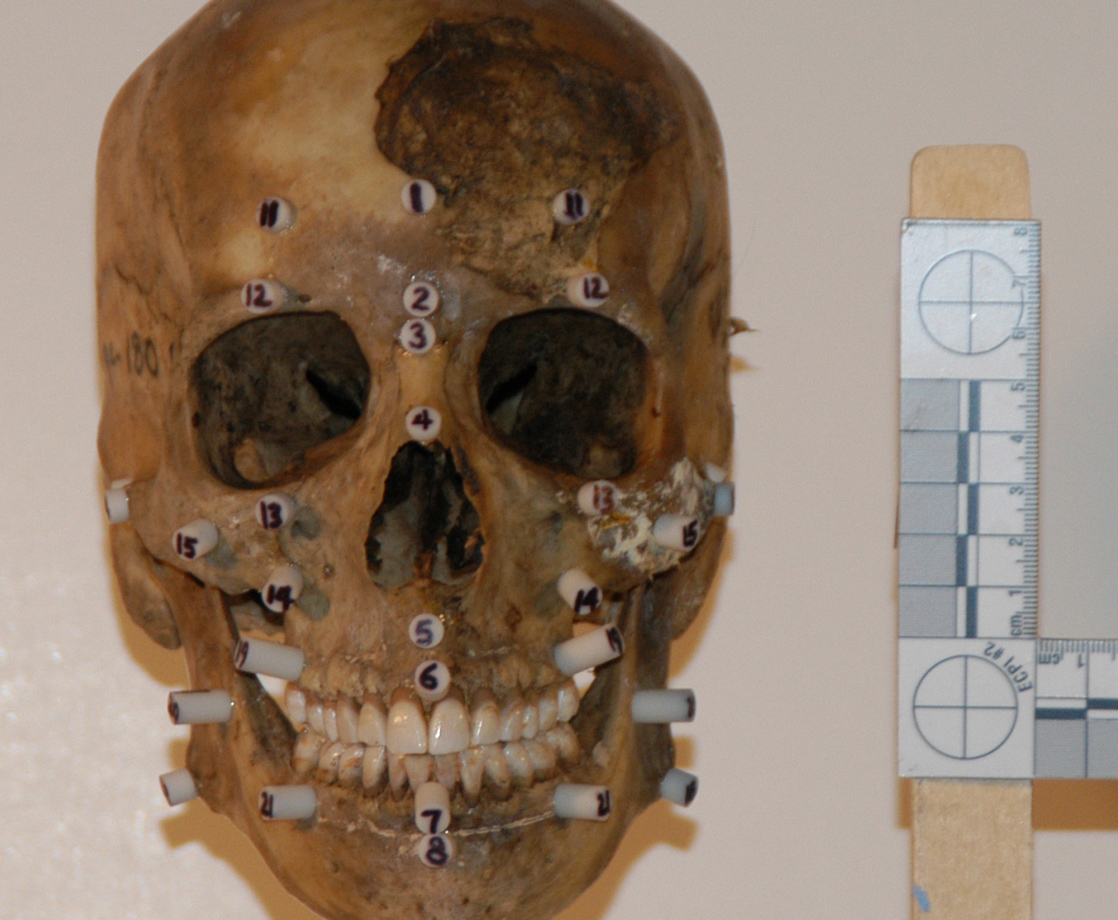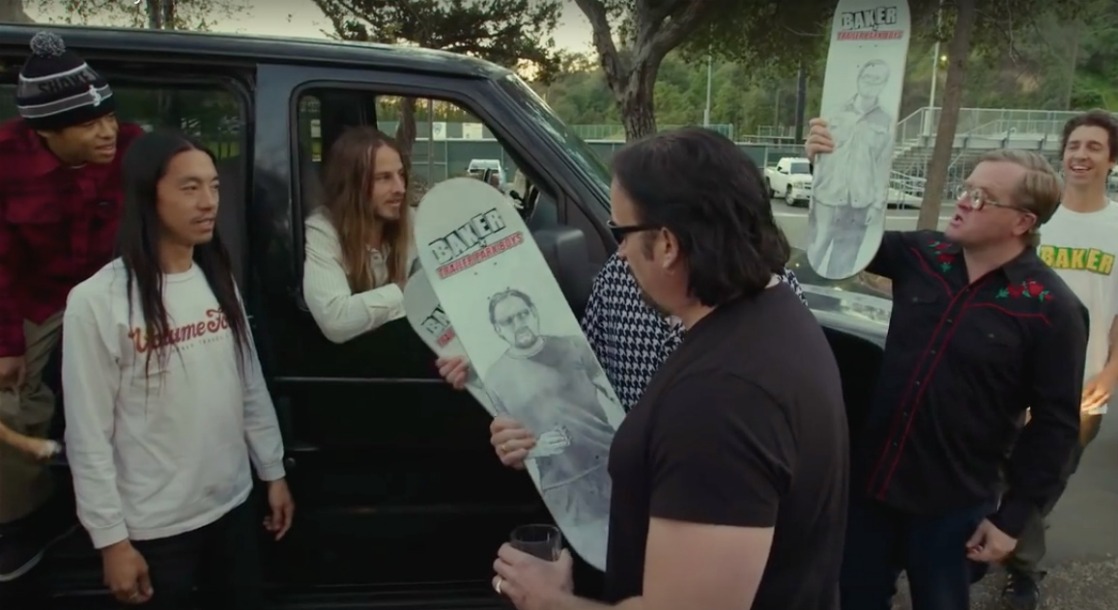All photos courtesy of M. William Phelps and Kensington Press
In Silence of the Lambs, Jody Foster’s character, Clarice Starling, becomes entangled in a weird and oddly personal relationship with Hannibal Lecter, Anthony Hopkins’ iconic, homicidal psychopath. In September of 2011 award-winning journalist M. William Phelps embarked on a similar endeavor. He started a relationship with Canadian serial killer Keith “Happy Face” Jesperson, giving him a platform on his show Investigation Discovery series Dark Minds, which focused on unsolved homicide cases thought to be the work of serial killers. Jesperson claimed to have murdered nearly 200 individuals, though only nine have been confirmed. He got his nickname due to the smiley face doodles he’d ultimately include on his confession letters, following his arrest in 1995. Phelps used Jesperson as a consultant on the show, allowing him to get into the mind of a serial killer in hopes that it would help him solve cold cases.
Over the years, Phelps collected over 7,000 pages of letters, hundreds of hours of audio interviews, countless art, and three hours of Skype interviews with Jesperson. It was a frightening and intriguing adventure for the journalist, whose sister-in-law Diana Ferris was strangled to death in 1996 at the age of 35 — a case that remains unsolved to this day. In a new book, Dangerous Grounds: My Friendship with a Serial Killer, out on Kensington, Phelps takes readers into the mind of Jesperson and, more importantly, into his own psyche as he came to grips with the complex relationship he formed with the cold-blooded killer.
With chapters like “Meeting My Friend, The Psychopath,” “Death Becomes Him,” and “Selective Madness,” Phelps recounts Jesperson’s story while simultaneously relating his own personal journey and how the friendship affected him. MERRY JANE chatted with Phelps by phone to find out why he wanted to write about his relationship with Happy Face, what surprised him the most about the friendship, and if there’s any hope for Jesperson’s soul. Here’s what he had to say.

MERRY JANE: What inspired you to turn your relationship with the serial killer “Happy Face” Jesperson into a full-length book?
M. William Phelps: When I started dealing with Jesperson, he was an anonymous voice on the phone on my television show Dark Minds. The relationship was based on him profiling cases for me on television using an anonymous name, Raven. We began communicating three, four times a week in 2011, and over the years it just grew. The interviews I was doing with him were just incredible. He was being so open and honest. It made me realize a couple of things. For example, one of the victims he’s on the books for, he didn’t murder. He murdered a different girl. He could possibly identify a Jane Doe that I could bring home to a family. I never [planned] on writing this book. It just kind of grew as Happy Face took over my life spiritually, emotionally, and physically.
How did you first connect with “Happy Face” and when did you decide you wanted to get his expert opinion on your show?
Many years ago, I created a show called Murder Squad. It was based on solving cold serial killer cases. I needed a serial killer to appear on the show — someone in prison who was willing to talk about cases, analyze them, and profile them. I started writing to different serial killers [in prison], and Jesperson was the one who wrote back the most vigorously. He just started writing back and didn’t stop.
Would you call it a friendship? Can a serial killer really become someone’s friend?
I would call it a business relationship. What happened over that time period, the six years that I communicated with him, was that he began to slowly get inside of my head. What I started to do, as a compassionate human being, was to search for answers and any form of humanity in this individual. I wanted to see if a psychopath, if someone who’s born that way and develops into this monstrous serial killer, has any humanity left in them. I figured I could ask the right questions and maybe I’d get the right answers.

Keith "Happy Face" Jesperson (left) and author M. William Phelps (right)
What surprised you the most in what you learned from him in this relationship?
What surprised me the most was his honesty over certain things. Cynthia Rose was victim number eight. But he told me he found out in 2009, when he saw a picture of her, that she wasn’t the girl he killed. They found Cynthia Rose close to where he dumped this other girl, so they attributed Cynthia Rose to him. At first, I didn’t believe him. I’m thinking he’s just a fucking, lying serial killer — a piece-of-shit psychopath who’s trying to play me.
But when he kept telling me the same thing, I decided to investigate the case. I got his trucker log book. I got the autopsy report and all the police reports connected to Cynthia Rose. I started questioning him on all that information, without him knowing I had the information. I questioned him for about a year-and-a-half regarding that case, and found out he was telling the truth.
What do you think of the “murderabilia” market and all the people who trade the artwork of killers? Are these people fans of your show and writing?
Of course I have some some fans from the murderabilia crowd and serial killer groupie crowd, but the majority of my readers are females, aged 35 to 85. I think it’s fucking disgusting that someone would take a piece of clothing or a comb or a picture that a serial killer drew and sell it for fucking money, because behind that picture, behind that serial killer, are families of the victims that are suffering. I know this because my sister-in-law was murdered in 1996, an unsolved case. I know what families go through when their loved one is murdered. To me, murderabilia is just kind of spitting on the grave of those people.
Would you say your career is an attempt to understand the person who might have killed your sister-in-law?
I think you’ve hit the nail on the head. That. Of course it’s not conscious, but it’s subconscious. Jesperson kept telling me, “I want to help you understand the person who killed your sister in.” But I kept pushing him back saying, “Let’s not make this personal between us, this is about you, and this is about the questions I ask you. This is not about you trying to help me, this is about me asking you questions and you answering them.” In the end, he really did reveal some information to me that helped me understand, not only the person who killed my sister-in-law, but the kind of person that she is seen as in the public.
A painting made in prison by the serial killer Keith "Happy Face" Jesperson
What was it like to be in the mind of a serial killer? Did you find what you were looking for?
It was torture. It didn’t start out as that, but it turned into psychological torture for me. It started to deteriorate my soul, my physical health, my mind. A friend of mine, a psychologist, told me in 2011 when I first reached out to Jesperson, “Phelps, you’re a big guy, you lift weights, you’re a spiritual guy, a tough guy, but let me give you some advice. If the devil knocks at your door and you invite him in, you better be fucking ready to dance with him, or he’s going to get in your head.” I kind of laughed and said, “Come on, I’ve been doing this for years, I’ve been writing these books for years, nothing can break me.” But in the end, I wasn’t laughing anymore at the psychologist. He was right.
What’s your final assessment of Happy Face? What type of person is he? Is there any hope for his soul?
I’ve written 34 books total, and seven of those are about serial killers. I can say this, serial killers cannot stop killing. They will not stop killing. I asked Jesperson, “If you were let out of jail tomorrow, would you kill again?”
His response was, “I’d tell you no, Phelps, because that’s what you want to hear, you want to hear that I’ve been rehabilitated. So I’d tell you no. But in reality, the truth is I probably would.”
I could take the word “probably” out of there and say he definitely would because he’s a born psychopath and he developed into this really violent killer. He can’t change. He can’t change who he is, even if he wanted to.
Follow Seth Ferranti on Twitter












